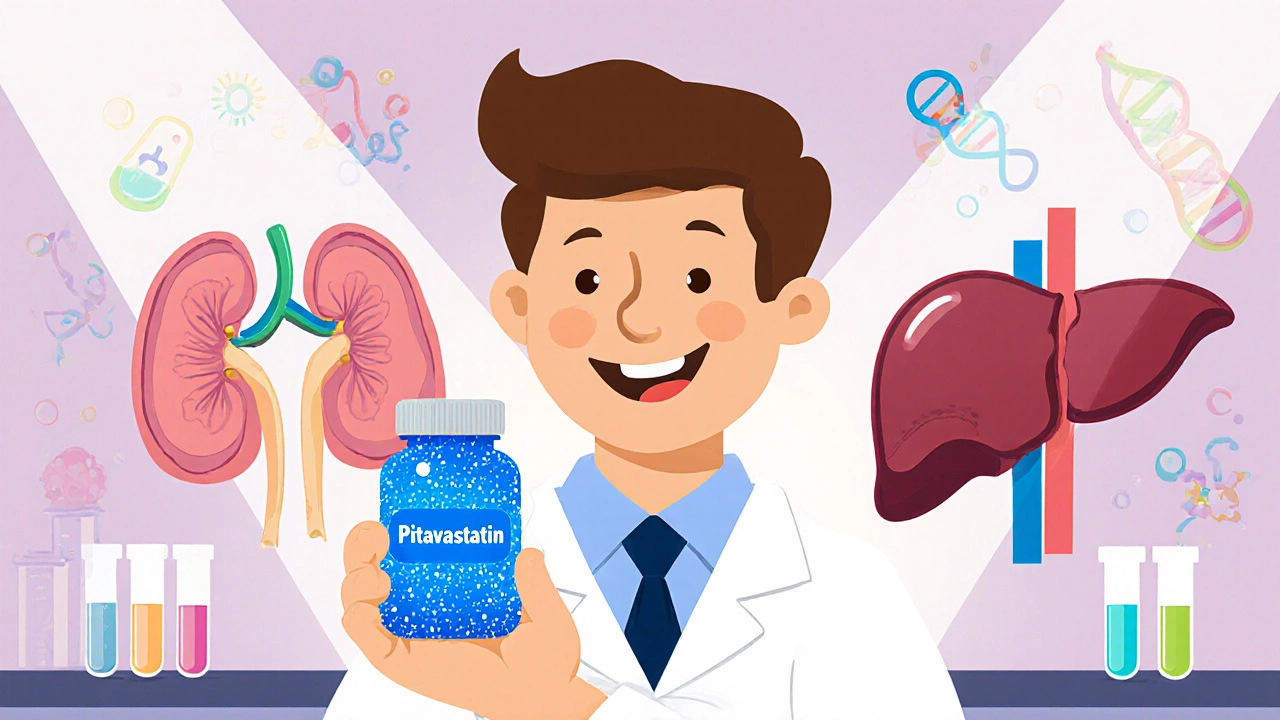Pitavastatin: What It Is and Why It Matters
When working with pitavastatin, a prescription statin that helps lower blood cholesterol. Also known as Livalo, it targets low‑density lipoprotein (LDL) levels and supports heart health. In everyday language, think of it as a tool that tells your liver to make less of the “bad” cholesterol that can clog arteries. If you’ve ever wondered why doctors prescribe a statin instead of a vitamin, this is the core idea.
Key Points About Pitavastatin
pitavastatin belongs to statins, a class of drugs that reduce cholesterol synthesis by inhibiting HMG‑CoA reductase. By blocking that enzyme, statins cut the production line for cholesterol, especially LDL. Lowering LDL is important because LDL cholesterol, the "bad" cholesterol linked to plaque buildup in arteries is a direct path to reducing the chances of heart attacks or strokes. In simple terms: pitavastatin → statins → lower LDL → lower cardiovascular disease risk.
The link between LDL and cardiovascular disease, conditions like heart attack, stroke, and peripheral artery disease caused by blocked arteries is well‑documented. When LDL drops, arteries stay cleaner, blood flows easier, and the heart doesn’t have to work as hard. That’s why many patients see improvements in blood pressure and overall stamina after starting a statin regimen.
Typical dosing for pitavastatin is once daily, often 1 mg or 2 mg, taken with or without food. Doctors choose the dose based on your current LDL level, overall risk profile, and how you tolerate the drug. Starting low and checking your labs after 4‑6 weeks is a common approach. If your numbers don’t move enough, the doctor may nudge the dose up a little; if side effects pop up, they might keep you at the lower end.
Speaking of side effects, most people handle pitavastatin well. The most frequent complaints are mild muscle aches or a touch of stomach upset. Serious muscle injury (myopathy) is rare but something doctors watch for, especially if you’re on other medications that affect the liver. Routine blood tests for liver enzymes and creatine kinase help catch any issues early. Staying hydrated, keeping an eye on any new pain, and reporting it promptly keeps the treatment safe.
How does pitavastatin compare to other statins like atorvastatin or rosuvastatin? It’s considered “potent” even at low doses, which can be handy if you need a strong LDL cut but want to minimize pill burden. Some studies suggest it may have a slightly better profile for muscle‑related side effects, but the real world varies. The bottom line is that the choice often depends on your personal health history, cost considerations, and how your body reacts.
Beyond the basics, there are many nuances: drug‑drug interactions (especially with certain antifungals or antibiotics), the impact on blood sugar control, and even potential benefits for people with chronic kidney disease. Our collection of articles below dives into these topics, from real‑life patient stories to detailed drug‑comparison charts. Whether you’re new to cholesterol‑lowering therapy or looking to fine‑tune an existing plan, you’ll find practical advice that matches your situation.
Now that you have a clear picture of what pitavastatin does, why it matters, and how it fits into a heart‑healthy strategy, scroll down to explore the full range of articles we’ve gathered. Each piece adds a piece to the puzzle—dosage tips, side‑effect management, and how pitavastatin stacks up against other options—so you can make informed decisions about your cholesterol care.

